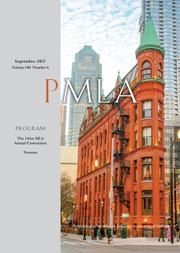No CrossRef data available.
Article contents
Prosodic Unrest in Shakespeare's Sonnets
Published online by Cambridge University Press: 15 April 2025
Abstract
One particular effect to which Shakespeare puts the verbal rhythms in his sonnets is to generate a kind of prosodic unrest. To illustrate this effect, this essay first distinguishes and coordinates a set of six or seven forms of syllabic emphasis involved when a reader prepares to voice a sonnet aloud. This prosodic taxonomy allows readers to discern and appreciate a kind of tension Shakespeare generates in the syllables that make up his rhythmic verses, a prosodic tension that underscores the emotion depicted in many of the “dark lady” sonnets and in some of the more angst-ridden of the other sonnets, particularly those where he treats the injuries that the fair youth and he have suffered at each other's hands.
Information
- Type
- Essay
- Information
- Copyright
- Copyright © 2025 The Author(s). Published by Cambridge University Press on behalf of Modern Language Association of America

